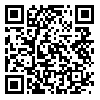BibTeX | RIS | EndNote | Medlars | ProCite | Reference Manager | RefWorks
Send citation to:
URL: http://jdisabilstud.org/article-1-2927-en.html
2- Associate Professor, Department of Sports injury and biomechanics, Faculty of Sport Sciences and health, University of Tehran, Tehran, Iran
Abstract
Background & Objectives: Shoulder impingement syndrome is one of the most common shoulder disorders. The kinematic alterations observed in shoulder impingement syndrome comprise a visible change in the position of the scapula and its movement on the chest. The lack of corrective exercises for shoulder impingement syndrome and its frequent problems are important challenges. Since shoulder pain is relatively common and impingement syndrome is one of its most common causes, and according to previous studies that stated that the lack of muscle balance is the source of functional impingement syndrome, it is essential to provide appropriate solutions to correct this injury. This study aimed to investigate the effects of an 8–week corrective exercise program based on the National Academy of Sports Medicine (NASM) principles on physical condition, pain, and proprioception in male swimmers with shoulder impingement syndrome.
Methods: Considering the intervention (NASM corrective exercises), the targeted selection of the subjects, and the inclusion and exclusion criteria, the current research was quasi–experimental. The statistical population, excluding the effect of gender, included all elite male swimmers aged 20 to 35 living in Kohgiluyeh and Boyer–Ahmad Province, Iran. In this research, among the qualified volunteers based on the study inclusion criteria, 30 people entered the research using the available method. Then, they were randomly divided into two groups of 15 people each: corrective exercises and control. The inclusion criteria for participants included a kyphosis angle greater than 42 degrees and the presence of at least two symptoms of shoulder impingement syndrome, as determined by a series of diagnostic tests, including pain in the subacromial region, the presence of a painful arch up to 120 degrees, a positive Jobs test, a positive Neer test, a positive Hawkins test, and shoulder isometric resistance abduction pain. The exclusion criteria were having related pathological symptoms such as a history of fracture and surgery and or joint diseases of the spine and the presence of hyperlordosis abnormality (degree of lumbar lordosis above 50 degrees). The corrective exercise group performed NASM exercises for 8 weeks, and pre– and post–intervention measurements were taken of back arch angle, pain, and proprioceptive accuracy. The information obtained from measuring the research variables was analyzed using descriptive and inferential statistics (including analysis of covariance, paired t test, and independent t test) In SPSS version 23 software. The level of significance was set at p< 0.05.
Results: The results of the paired t test showed a significant decrease in the average amount of back arch angle (p=0.003) and shoulder pain (p=0.003) and a significant increase in the accuracy average of shoulder proprioception (p<0.001) in the corrective exercise group from pretest to posttest. However, these variables did not change in the control group (p>0.05). The results of covariance analysis showed a significant decrease in the amount of back arch angle (p<0.001) and pain (p<0.001), as well as a significant increase in shoulder proprioceptive accuracy in the corrective exercise group (p<0.001). The analysis of covariance showed back arch angle with an effect size of 0.58, pain with an effect size of 0.44, and target reconstruction error angle with an effect size of 0.37 in the posttest in the exercise group after controlling the effect of the pretest.
Conclusion: This study found that NASM exercises can effectively reduce back arch angle and pain and improve proprioception in male swimmers with shoulder impingement syndrome. The study suggests that the NASM–based corrective exercise program is a viable treatment option for shoulder impingement syndrome in male swimmers.
| Rights and permissions | |
 |
This work is licensed under a Creative Commons Attribution-NonCommercial 4.0 International License. |



